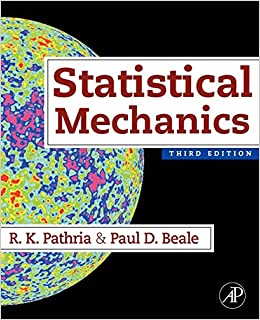Making the suggested substitution into eqn. (14.2.24), we get [ begin{aligned} Q_{N}=int & cdots int exp left[sum_{j=1}^{N^{prime}}left{K_{0}^{prime}+K_{1}^{prime}
Question:
Making the suggested substitution into eqn. (14.2.24), we get
\[
\begin{aligned}
Q_{N}=\int & \cdots \int \exp \left[\sum_{j=1}^{N^{\prime}}\left\{K_{0}^{\prime}+K_{1}^{\prime} \cdot \frac{2 \Lambda}{K_{1}} s_{j}^{\prime} s_{j+1}^{\prime}-\Lambda^{\prime} \cdot \frac{2 \Lambda}{K_{1}} s_{j}^{\prime 2}\right\}\right]\left(\frac{2 \Lambda}{K_{1}}\right)^{N^{\prime} / 2} \\
& d s_{1}^{\prime} \ldots d s_{N}^{\prime} .
\end{aligned}
\]
In view of eqns. (14.2.25), with \(K_{0}=K_{2}=0\), we now have
\[
\begin{aligned}
& e^{K_{0}^{\prime}} \cdot\left(\frac{2 \Lambda}{K_{1}}\right)^{1 / 2}=\left(\frac{\pi}{\Lambda}\right)^{1 / 2} \cdot\left(\frac{2 \Lambda}{K_{1}}\right)^{1 / 2}=\left(\frac{2 \pi}{K_{1}}\right)^{1 / 2}=e^{K_{0}^{\prime \prime}}, \text { say, } \\
& K_{1}^{\prime} \cdot \frac{2 \Lambda}{K_{1}}=K_{1} \text {, and } \Lambda^{\prime} \cdot \frac{2 \Lambda}{K_{1}}=\frac{2 \Lambda^{2}}{K_{1}}-K_{1}=\Lambda^{\prime \prime}, \text { say. }
\end{aligned}
\]
The resulting expression for \(Q_{N}\), when compared with eqn. (14.2.19), leads to the functional equation
\[
\begin{equation*}
f\left(K_{1}, \Lambda\right)=-\frac{1}{2} K_{0}^{\prime \prime}+\frac{1}{2} f\left(K_{1}, \Lambda^{\prime \prime}\right) \tag{1}
\end{equation*}
\]
where
\[
\begin{equation*}
K_{0}^{\prime \prime}=\frac{1}{2} \ln \left(\frac{2 \pi}{K_{1}}\right) \text { and } \Lambda^{\prime \prime}=\frac{2 \Lambda^{2}}{K_{1}}-K_{1} \tag{2}
\end{equation*}
\]
To verify that the function (14.2.32) satisfies the functional equation (1), we note that the right-hand side of this equation is
\[
\begin{aligned}
& -\frac{1}{4} \ln \left(\frac{2 \pi}{K_{1}}\right)+\frac{1}{4} \ln \left[\frac{\Lambda^{\prime \prime}+\sqrt{\Lambda^{\prime \prime 2}-K_{1}^{2}}}{2 \pi}\right] \\
& =\frac{1}{4} \ln \left[\frac{K_{1}}{2 \pi} \cdot \frac{\left(2 \Lambda^{2} / K_{1}-K_{1}\right)+\sqrt{4 \Lambda^{4} / K_{1}^{2}-4 \Lambda^{2}}}{2 \pi}\right] \\
& =\frac{1}{4} \ln \left[\frac{2 \Lambda^{2}-K_{1}^{2}+2 \Lambda \sqrt{\Lambda^{2}-K_{1}^{2}}}{4 \pi^{2}}\right]=\frac{1}{2} \ln \left[\frac{\Lambda+\sqrt{\Lambda^{2}-K_{1}^{2}}}{2 \pi}\right]
\end{aligned}
\]
which is precisely \(f\left(K_{1}, \Lambda\right)\).
Step by Step Answer:






